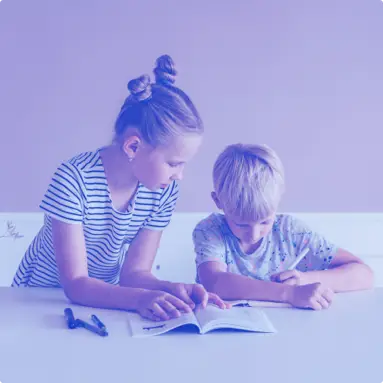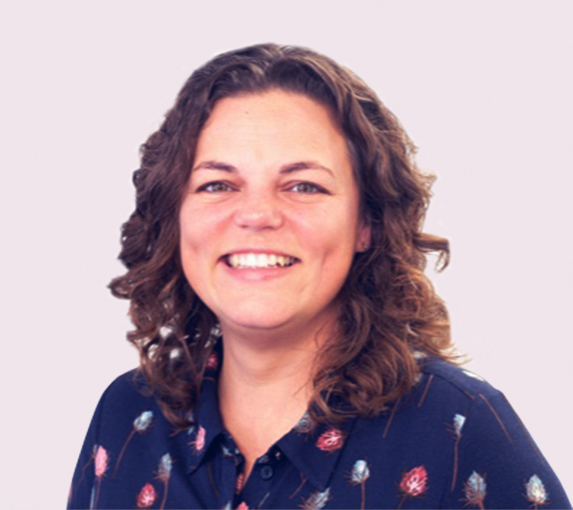
Episode 8: Lined or Unlined Paper: The Great Debate
Bike stabilisers, conference experiments and more. In this episode Andy, Emily and Adam wonder if children should be using lined or unlined paper in school. Is it a personal preference? Does one have more benefits than the other? Plus, the research to support this debate.
More Podcasts on Education
Continue listening to our educational experts
Meet your instructors
The school of school podcast is presented by:

Andy Psarianos
@andy_psarianos

Emily Guille-Marrett
@EmilyEatsBooks

Adam Gifford
Never miss an episode
Subscribe to get the latest The School of School podcasts delivered to your inbox.
Podcast Transcription
Andy Psarianos
Hi, I'm Andy Psarianos.
Emily Guille-Marrett
Hello, I'm Emily Guille-Marrett.
Adam Gifford
Hi, I'm Adam Gifford.
Introduction
This is the school of school podcast.
Welcome to the school of school podcast.
Andy Psarianos
All right. Hi, everyone, today we're talking about lined or unlined.
Go on Adam. This was your idea.
Adam Gifford
Well, it only came up because I started using pen and paper and pencil and paper for quite a bit of note taking and getting some ideas down recently. And I bought both lined and unlined and I was thinking what I'd gravitate to depending on what I'm doing. And I just wondered whether or not we're going to have a preference for certain things. We would make a choice, if you were presented with two books, if you went to a conference and there were two books in front of you and you could choose one to take your notes, something like that. We would all, I'm assuming have a preference depending on what it is, and I just wonder what the impact of that is for children.
So in schools we see a lot of lines, but this isn't true globally for all children. And so there's these wee things, we've talked about previously, pens and pencils. And these things that, how much thought's given to it. But what's the difference when we're getting our ideas down on lines or unlined paper, that's where it came from.
Emily Guille-Marrett
We are talking about that from a left to right directionality perspective in our culture as well, with the lined and unlined.
Andy Psarianos
This is a really a fascinating topic and it's come up a lot, actually a question when I used to do a lot of the training in the early days, this came up a lot because when we first did the Maths — No Problem!! sort of little booklets that we gave out at the training, I think now they don't have any lines in them at all, but the first version had grid paper in it. Right. And, this became a topic of discussion often. It was like, just because we were giving these away in the training, teachers started asking, should our math journals be on grid paper and it was like, actually, I don't know. I never really thought about it. But then when you start investigating it and thinking about it, what you very quickly realized is when you give people grid paper, it actually molds their thinking in a particular way.
And sometimes it can help them. But a lot of the times it actually ends up interfering. So in some instances it can be a catalyst for a particular way of thinking. But in a lot of instances, it actually becomes the thing that stops them. They obsessed with the squares. So like with bar modelling would be a great example. They start drawing the models, according to the grid, but then something happens, you got to divide it by three and it doesn't work with the way they drew it out. And now they're stuck. And it's not a catalyst, it's actually an obstacle. It stops them from being able to think.
Adam Gifford
The argument I hear a lot is about place value. It's built around a sort of longer written algorithm, a longer written subtraction or addition or multiplication or division. But I just wonder, okay, well, what about the rest of mathematics and what would be lost if they were to do the same thing on piece of unlined paper?
Cause it would be easy to represent some of the other, the representations that's merely just one representation of an addition. There's a whole host of others. But yeah, I just think that, I don't know, we should do an experiment. Next time, this is the experiment you all got to look out for, is next time you're at a conference or something like that, give people on one table squared paper, oh, you can't really do that. Is this ethical?
I'll keep going anyway. Give people on one table squared paper.
Andy Psarianos
Who cares? We're scientists. We can do what we want.
Adam Gifford
And then the other table, unlined paper and then compare notes at the end of it. I would like to think, and maybe this is just a romantic ideal. I would like to think that the unlined paper would show greater breadth of thought. That's just a personal preference. Of course, I have no reason for that.
Emily Guille-Marrett
I'm feeling really uncomfortable here because I'm thinking about, it's a very personal specific, which is never a good thing for something as important as this. But I think the place value thing early on, maybe, there is a place for it until a certain point. And then you have to break free a bit, so when you see the younger children and they're kind of, they go to do their common additional, subtraction and the things aren't in the right place, maybe it's a bit like stabilizers on a bike. Although, I do know people who ride bikes that are very anti stabilizers. So, just say, but maybe it's that thing. If there's a point where it can be helpful, but not for everything and maybe not beyond a certain point.
Andy Psarianos
Yeah. Is it scaffolding, which is good. But you need to be able to take the scaffolding down and the building needs to still be able to stand. If you take it away and it doesn't work anymore, it's not scaffolding, its something else.
Emily Guille-Marrett
Maybe it's not scaffolding for bar modelling either, after Adam said that just blew my mind. So that's the end of that for me. There's obviously a place for, there's a place for different types of paper.
Andy Psarianos
Yeah.
No, there is. No, I think there totally is. So it's just like when you're teaching a new concept, you have to choose a particular manipulative. So when you want to move kids into an important stage in counting, is being able to move to place value. So when you get to that stage, you're not going to use linking cubes anymore. Linking cubes are now working against you. You want to move to something that, like a 10 frame, where the format is 1, 2, 3, 4, 5, 6, 7, 8, 9, 10, that's one 10, 11, 12, 13, 20. That's two tens.
And you want to get them to start thinking this idea of counting in different nouns. There's ones and there's tens and that's a big jump. That's a really big jump for kids, right?. So at that stage, you want to very much manipulate them into thinking in a particular way. So you're going to give them a construct that supports the way you want them to think. So that's really important with manipulatives and mathematics, but is there an argument for paper as well?
So like handwriting, teaching kids how to do handwriting. I would assume for small children, lines are probably pretty handy at that stage, right?
Emily Guille-Marrett
Well, that's interesting because that is controversial. So there's a point where maybe it's,
So there you go. No, but it's no, but you are right. Because for some people they will say, absolutely, Andy, you are correct. That's how it needs to be, even on the whiteboards. And then there are other people that say, don't do it too early, actually just be free to start with, particularly because of the size of the letter. They haven't yet got those fine motor skills. It's better to let them learn the shape and then leave it so that there's no lines, but then when you them to...
So it's almost like an emerging, then into the lines and then, I guess as they get older, they do do lines, but straight off, there's always a debate about whether you should start with lines or not, which I always find interesting.
Andy Psarianos
So then you get into the research. So what does the research say. So if you look at Zoltan Dienes, for example, in mathematics, Zoltan Dienes will tell you, he's very explicit. He says when you start no rules, it's just open play. Right. It's not to say that, do what you want. Obviously as the teacher, you have to orchestrate a scenario where you hope you can funnel them into somewhere. But you're going to leave it really open in the beginning and let them play with the idea so that they get a sense of where the boundaries are themselves. And then you increasingly structure them in to a point where then they have the skill and then they have to practice it. So, but you start off with this real open end, as open ended as you can be.
And then you get into this really finite point and that's his point of view on it. And something that at national problem, we very much believe in and try to apply in everything that we do. One of the many learning theories that we spend a lot of time trying to adhere to. So that goes well with what you're saying, start off in this kind of find out the form, a little bit of curvatures and the boundaries, if you want of what it is that you're trying to do. And then, eventually try to structure them down to a point so that would support that point of view.
I think no easy answer on that one.
Emily Guille-Marrett
So Adam to finish, if I was to give you the choice of a notebook with lined paper or a notebook with plain paper, given that you started this off, what would you choose?
Adam Gifford
It would have to be unlined. It would have to be. At least I'm writing a list. But then we'll save that for another day.
Andy Psarianos
Yeah.
So just an interesting question, complete left field here. Are you more likely to be a classical musician or a jazz musician?
Adam Gifford
Oh yeah. That's really hard. Emily, can you answer.
Emily Guille-Marrett
I'm going to say I'm going jazz, but I've got lined, but I'm actually deciding to write anyhow I want. So I might kind of go over the lines, outside the lines, through lines. So, I've got the lines, but a bit like a jazz player, I will use an abuse according to my requirements.
Adam Gifford
What Emily said, that's me too.
Andy Psarianos
Yeah.
So a quote from Thelonious Monk, I'll probably get this wrong. So Thelonious Monk, of course, jazz musician said he wrote down somewhere to his band in the notes for a piece that they were learning. He wrote down, "Don't play all the notes. Some of them need to be imagined."
Adam Gifford
I like it.
Emily Guille-Marrett
Oh, I love it.
Andy Psarianos
Yeah. Great.
All right. Thanks for joining everyone.
Closing
Thank you for joining us on the school of school podcast.
More Podcasts on Education
Continue listening to our educational experts
